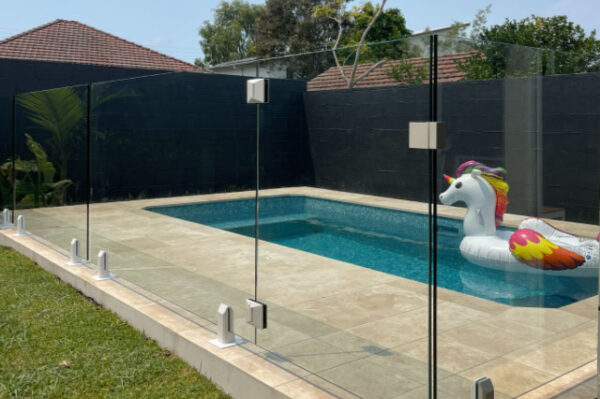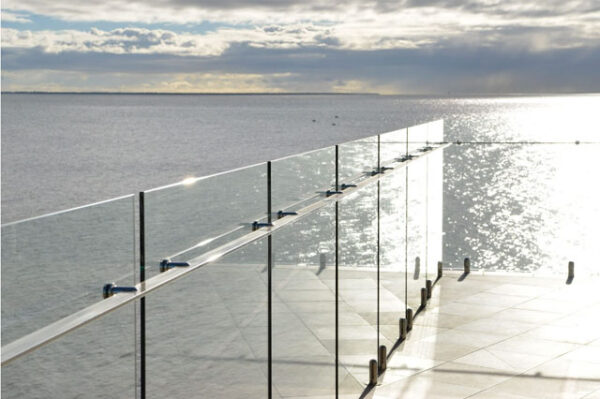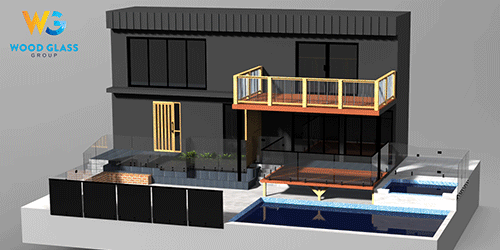How to Choose the Best Pool Fence for an Above-Ground Pool
Introduction
Choosing the best pool fence for an above-ground swimming pool in Australia involves careful consideration of safety regulations, design preferences, and practical constraints. Above-ground pools have long been a popular choice for Aussie homeowners seeking an affordable and relatively simple way to enjoy the water at home. However, ensuring these pools meet strict pool fencing requirements and rules is a legal requirement aimed at preventing accidental drownings, particularly among children. A pool fence that meets local codes and offers both functionality and style will not only protect your loved ones but also maintain the look and feel of your outdoor space.
A variety of factors must be weighed when selecting a fence for an above-ground pool. From material selection legal fence height to understanding height and gate requirements, every choice can influence both compliance and aesthetics. Additionally, it’s crucial to identify the right type of fence that can stand up to Australia’s climate, including harsh sun, wind, and occasional heavy rainfall. This guide covers each of these aspects in detail to help you make the right decision for your property.
Understanding Australian Pool Fencing Regulations
In Australia, pool fencing is governed by stringent standards designed to reduce the risk of drownings and injuries. These regulations are typically outlined in the Building Code of Australia (BCA) and reinforced by local state and territory laws. One consistent requirement across many regions is that the fence must be at least 1.2 metres in height. However, states and councils often have additional specifics regarding factors such as the gap between the ground and the bottom of the pool and fence itself, mandatory non-climb zones, and the type of gates allowed.
To ensure compliance with safety requirements, it’s essential to confirm the latest guidelines from your local council or state authority. Although there is a general framework nationwide, local councils may differ on certain points, such as whether you need to install a CPR sign, how high latch mechanisms should be, or how close trees or climbable structures can be to the fence. By clarifying these regulations before you begin, you can avoid costly retrofits and ensure ongoing safety.
Why an Above-Ground Pool Fence is Essential
The primary reason a fence is essential around any above-ground swimming pool, is to keep children and pets out of harm’s way. Despite the pool walls themselves providing some elevation, it only takes a momentary lapse in supervision for an accident to occur. A securely installed fence, paired with compliant gates and latches, forms a critical barrier to entry, potentially saving lives.
Another advantage is that a compliant pool fence can increase the value of your property. When boundary fence is properly designed, it can enhance the overall outdoor aesthetic and signal to prospective buyers that the home adheres to safety standards. As Australian regulations are strict, installing a fence that meets all guidelines can save time and stress if you ever plan to sell your home.
Material Options
Selecting the right material for your fence depends on your budget, maintenance preferences, and how well the material complements your overall yard design. Commonly, you’ll find materials like aluminium, glass, steel, and even certain types of PVC. Aluminium is lightweight, rust-resistant, and relatively low-maintenance, making it a popular choice in coastal areas where salt air can corrode metal.
Glass fencing, while often seen in more permanent pool structures, can be adapted to above-ground pools with the correct supports. It provides a sleek, modern look but requires regular cleaning to maintain transparency. Steel is sturdy and durable but might need periodic repainting or treatments to ward off rust. PVC can be cost-effective and is easy to clean, though it might not offer the modern look some homeowners seek.
Proper Fence Height and Gates
For an above-ground pool fence to comply with Australian regulations, it typically needs to stand at least 1.2 metres high. However, certain local rules may specify an even higher requirement to ensure children cannot climb over pool barrier. The fence must also have no footholds or protrusions that could aid in climbing, and openings between vertical bars or panels should not exceed a certain width (often 100 mm).
Gates are a focal point for compliance and safety. Most regions require gates to be self-closing and self-latching, opening outward from the pool area. The latch should be installed at a height of at least 1.5 metres from the above ground level, or placed on the inside of the gate where it’s not readily accessible to children. These guidelines significantly lower the risk of a child gaining unsupervised access to the pool.
Correct Installation Techniques
Ensuring your above-ground pool fence is solidly installed starts with proper planning. Check the ground’s stability and clear away any landscaping features that could reduce the fence’s effectiveness. If you’re installing the fence directly onto the pool’s frame, use brackets or supports designed for above-ground structures, ensuring the material can handle the added strain of strong winds or impact.
Once the fence is installed, you should closely inspect the base, vertical posts, and any connecting hardware for signs of weakness. Over time, the ground can shift, especially if you live in an area prone to heavy rainfall or drought. Regularly verifying that the fence remains secure and aligned will help you detect potential issues well before they become safety hazards.
Key Safety Considerations
In addition to meeting the mandated height and gate requirements, an above-ground pool fence must have limited footholds. Some Australian rules state that climbable objects, such as furniture or large toys, should be at least 900 mm away from the fence boundary on the exterior of outdoor pool. This rule prevents children from using these items to scale the fence.
Another crucial factor is ensuring that any space between the ground and the bottom rail of the fence doesn’t exceed 100 mm. This restriction prevents small children or animals from squeezing underneath. If your backyard swimming pool area sits on uneven ground, you might need to add fill, regrade the area, or use custom panels to maintain uniform clearance.
Combining Style and Compliance
While regulatory compliance is paramount, this doesn’t mean your fence must be an eyesore. Many manufacturers offer designs that blend with your existing outdoor décor, providing sleek lines, decorative finials, or even curved panels. Consider a fence that complements your home’s architecture and landscaping for a cohesive look.
Decorative touches can often be added without compromising safety. For instance, choosing panels with minimal top rails can deliver a modern, streamlined feel. Alternatively, glass panels with horizontal rails can create a more open vista. Just be sure any custom design adheres to local height and non-climbable zone standards, or else you risk a failed inspection and potential fines.
Durability and Maintenance
Australia’s climate can be punishing on outdoor structures. Fences made of powder-coated aluminium are particularly suited for resisting corrosion, while stainless steel can also endure coastal conditions, though it may require more frequent maintenance to stay pristine. If you choose glass, regular cleaning is necessary to prevent salt spray, dirt, and mineral deposits from dulling the panels.
Ensure gate latches and hinges remain well-lubricated to function properly. Rust, salt, or even accumulated dirt can compromise self-closing mechanisms over time. Regular visual checks, at least once every few weeks, can identify problems early. That way, you can arrange repairs or replacements before an issue poses a safety hazard or leads to non-compliance.
Professional Installation vs. DIY
Some homeowners with a knack for DIY might be tempted to install their above-ground or swimming pool safety fence on their own. If you fall into this category, be aware that local councils may still require an inspection or a compliance certificate upon completion. Undertaking the project yourself could be cost-effective, provided you possess the skills and follow all regulations meticulously.
On the other hand, hiring a professional installer familiar with Australian and pool fencing regulations and codes offers peace of mind. Experienced contractors will make sure your fence is installed in compliance from the start, handling issues like uneven ground or fence alignment with minimal fuss. Although it may cost more upfront, professional installation can help you avoid expensive rework and potential fines if your structure fails inspection.
Budgeting and Cost Factors
The cost of a pool fence in Australia can vary widely, largely influenced by the type of material, the complexity of your yard layout, and labour charges. Glass fences generally come in at the higher end of the spectrum, while aluminium is more budget-friendly. Steel can be somewhere in between, although additional protective coatings might add to the overall expense.
Keep in mind that cost doesn’t stop at the materials. Other factors, like necessary earthmoving, site preparation, or special hardware for gates, can add to the total. Finally, be prepared for any council fees or permit charges that may apply. Setting a realistic budget at the beginning helps you avoid unwelcome financial surprises partway through the project.
Common Mistakes to Avoid
One frequent oversight is assuming an above-ground pool doesn’t need a fence because the pool walls themselves are high. Australian law is clear that any pool, regardless of type, must adhere to fencing requirements. Another common mistake is positioning the fence inflatable pools too close to climbable objects like outdoor furniture, barbecues, or large potted plants, inadvertently creating a stepping zone.
Failing to maintain gate hardware is another misstep that can lead to safety breaches. A loose or improperly aligned self-closing mechanism can make the gate non-compliant and potentially dangerous. Always check that your gate closes and latches automatically without any manual assistance, and ensure the latch is at the correct height or otherwise inaccessible to children.
Privacy and Security Enhancements
While compliance and safety are the main goals, many homeowners also value a sense of seclusion around their pool. To enhance privacy, consider fences with minimal gaps between vertical bars, or explore frosted or tinted glass panels for a more sophisticated look. Louvered or slatted styles of glass pool fence can provide airflow while still limiting visibility.
Security can be increased with additional safety features, like alarmed gates that notify you when they’re opened, or reinforced lock systems designed to withstand significant force. These add-ons can give you extra peace of mind, especially if you have young children who might still manage to manipulate a latch or if your property is in a high-traffic area.
Additional Accessories and Upgrades
If you’re seeking more functionality from your pool fencing setup, accessories can bolster both pool safety, and convenience. Some people opt to install motion sensor lighting near gates to ensure easy night-time navigation. Others add door alarms on adjacent home entrances that open directly to the pool area, providing an additional layer of child-proofing.
Removable pool fences might be useful for those who occasionally host gatherings and need more open space, although they must still comply with regulations whenever the pool is filled. Another popular upgrade for pool owners is a pool cover with a safety lock, particularly for those times of year when the pool sees less use but still holds water.
Conclusion
Choosing the best pool fence for an above-ground pool in Australia goes far beyond simply picking a style you like. It’s a process that requires close attention to legal requirements, practical considerations, and the day-to-day realities of Australian weather. By understanding your local regulations, evaluating materials, and factoring in ongoing maintenance, you can create a safe, compliant, and visually appealing environment for all. A well-designed and properly installed fence not only serves as a vital safety barrier but can also enhance the overall value and enjoyment of your outdoor space.



